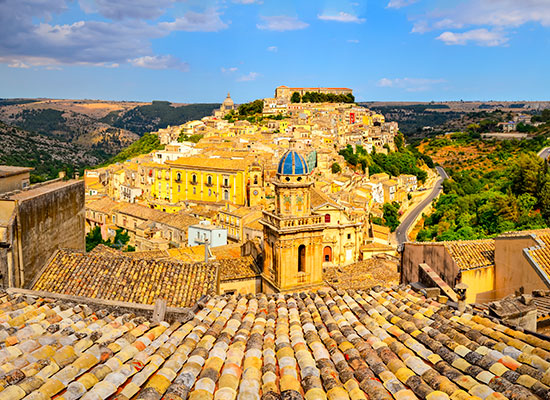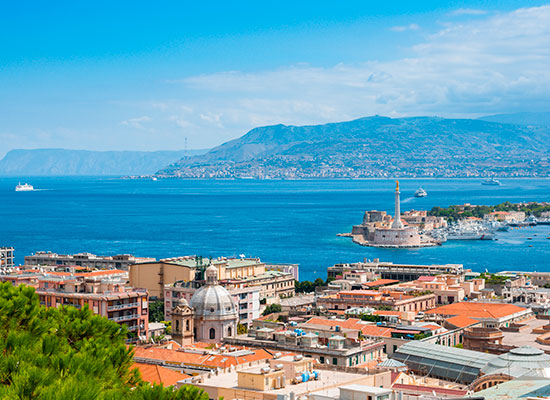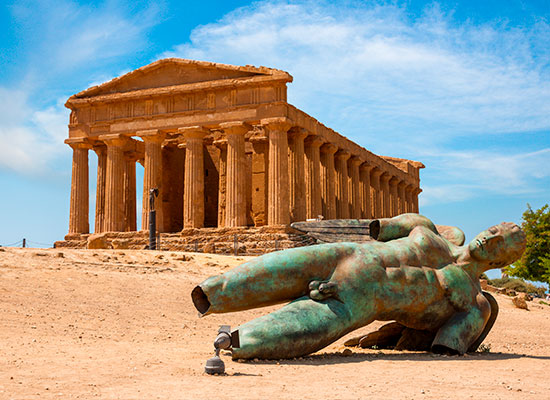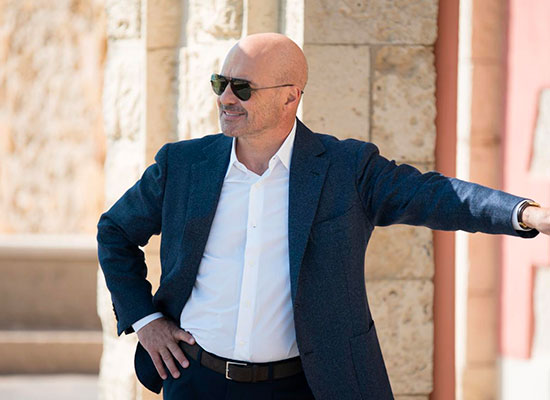Tours Experience
We have selected some itineraries for you to enjoy the comfort of a private tour, discover some of our Private Experience Tours.

Catania and Riviera dei Ciclopi
A half-day visit to this ancient city, with its elegant baroque center that will envelop you right away! Around Catania you can visit the Cathedral of Sant’Agata, the Town Hall, the Elephant Fountain, the Fish Market, via Etnea, the Roman Amphitheater and via Crociferi with its row of eighteenth-century churches and convents. Also along the lava coast you can admire the “stacks”, the high islets in lava rock that come out of the sea of Acitrezza, a seaside village founded in 600. According to legend, these rocks are the stones thrown by the Cyclops Polyphemus against Ulysses on the run, as narrated in Homer’s Odyssey.

Siracusa and Noto
A full day tour of these fascinating cities rich in history and culture. In Syracuse you can visit the Archaeological Park of Neapolis with the Greek Theater, the Roman Amphitheater, the Altar of Hieron, the Latomia of Paradise and the Ear of Dionysus. The old town with its labyrinth of narrow streets is located on the quail-shaped island, Ortigia, where you will find the spectacular cathedral, the temple of Apollo, the Fountain of Arethusa and the colorful daily market offering fresh produce, cheese and fish.
Noto, rebuilt after the earthquake of 1693, is renowned for its breathtaking Baroque architecture, enhanced by the golden color of the stone used for its construction. In particular you will see the impressive shelves of the balconies of Palazzo Nicolaci, and a series of graceful churches, culminating with the cathedral, reachable via a long staircase, and the lovely public gardens.

Piazza Armerina and Aidone
This excursion will take you to the interior of Sicily, to see the famous Villa Romana del Casale near Piazza Armerina, once a magnificent Roman villa of which the extensive mosaic floors, unique for their quality and extension, have survived practically intact. Morgantina, near Aidone, occupies a stunning position on a long ridge, surrounded by wooded countryside. It was the site of a large and important Sicel town, which later also housed Greeks from Gela and Katane (Catania), before being taken and destroyed by the Romans in 211 BC. Many important artefacts were excavated illegally by clandestine diggers and sold to wealthy collectors in the USA, ending up in important museums. Now successfully reclaimed, these Morgantina antiquities are on display in the interesting museum of Aidone, including the Dea, a large statue of a goddess striding forth, her garments rippling behind her, thought to be the work of a follower of Pheidias, and the recently arrived Head of Hades.

Cefalù and Castelbuono
A pretty town on the northern coast of Sicily, Cefalù has a superb Norman cathedral decorated inside with extraordinary Byzantine mosaics. In the town there is also a museum founded by the local nobleman, Baron Mandralisca, with his collections, which include a famous painting by Antonello da Messina of the “Unknown”. Castelbuono is in the hinterland of Cefalù, an ancient town of warm pink stone and old pasty bricks, the roofs animated by jackdaws and swifts. It basks at the foot of its spectacular castle, in a fold of hills covered with ash and chestnut woods.

Palermo and Monreale
The Sicilian capital is located between the Tyrrhenian Sea and the Conca D’oro Mountains. Walking in the medieval area of Palermo you can visit “Piazza Pretoria” with its beautiful Renaissance fountain, the magnificent Cathedral – Church of “San Cataldo” and much more. We will then continue on foot to visit San Giovanni degli Eremiti one of the best known Norman monuments built by Roger II and the Norman Palace. Afterwards, we will move to the village of Monreale, along a wonderful road that overlooks the “Conca D’Oro” valley. We will visit the magnificent Cathedral of Monreale and the “Cloister of the Capuchins”. Not to be missed, the famous open-air fish market, the “Vucciria”, a dip in the most authentic Sicilian folklore.

Ragusa, Modica and Scicli
In 1693 a disastrous earthquake, the worst ever recorded in Italy, killed thousands of people and almost completely destroyed the towns in southeast Sicily. But after the damage came a remarkable reconstruction in Sicilian Baroque style, flamboyant and theatrical, as if defying the evil spirits that cause earthquakes, with many churches which seem to soar to the heavens, to offer the protection of Jesus, Mary, and all the saints. Ragusa, Modica and Scicli, all UNESCO World Heritage Sites, are excellent examples of this delightful architectural style.

Messina
A full-day tour visiting the breezy and beautiful Messina, with stunning views over the Straits towards Calabria, the city centre with its historical cathedral, Renaissance fountain (one of the loveliest in Italy), and the Clock Tower with its midday sequence of clockwork animations regarding the history of the city, religious events, the phases of life and the story of the Letter that the Madonna wrote to the people. Perhaps you can also visit the stunning Regional Museum, recently restyled, with collections including works by Caravaggio and Antonello da Messina.

Caltagirone
Full of churches, palaces, and noble eighteenth-century villas, it is worthy of a visit. For its architectural heritage, the historic center was awarded the title of World Heritage Site by UNESCO in 2002.

Agrigento
The Valley of the Temples in Agrigento (World Heritage Site by UNESCO) according to Goethe, “I’ve never seen splendor like this in my entire life” and is a wonder to discover. The Temple of Concord, the Temple of Hercules, the Golden Gate, with the eponymous nineteenth-century villa, the Necropolis and Villa Aurea, and Telamon (a male monumental sculpture of the fifth century BC.) in the Temple of Zeus are some of the colossal monuments to visit. The itinerary continues – if you wish – along the coast and along the golden beaches of San Leone, or at the time of the Scala dei Turchi, a beach having pure white rock cliffs.

Godfather Tour
Francis Ford Coppola chose various locations in eastern Sicily as settings for his series of films “The Godfather”, starting in July 1971 with Savoca. Recently elected one of the most beautiful villages in Italy, here you will find the Vitelli Bar (where Michele meets Apollonia’s father) and the church of Santa Lucia (where Michele marries Apollonia). Continuing to the pretty medieval village of Forza D’Agrò you can admire the Mother Church that appears in Il Padrino 2. Near Fiumefreddo you will visit the Castello degli Schiavi, owned by Baron Franco Platania, a magnificent villa that in the film belonged to the family of the Godfather.

The World of Chief Inspector Salvo Montalbano
Created by Andrea Camilleri, Salvo Montalbano is a gritty policeman that everyone likes. Various locations in Sicily have been chosen to represent Vigata, his imagination, for a successful series of films based on the stories of the writer Camilleri. Immediately recognizable will be his home on the beach of Sampieri. In addition, some dramatic scenes were shot in Donnafugata and Scoglitti, his police headquarters are in Ragusa and the office of his police chief in Scicli.
MOUNT ETNA – South Side A drive up the slopes of Europe’s largest and most active volcano, to the end of the road at Rifugio Sapienza, where you can explore some of the side craters, or take the cable car and the 4 wheel drivi minibuses (2,30hrs – cost not included) to the base of the central craters, from 6.500 feet to nearly 10.000 feet (2.000 mt to 3.000 mt)! Your drive will take you through several of the villages on the slopes, each with its particular products – Zafferana Etnea, for example, is one of the most important centres in Italy for the production of honey. AVAILABLE ALSO ON 4WD JEEP (Discovery/Pathfinder/Range Rover) for some off-road driving.
MOUNT ETNA – North Side A drive up the slopes of Europe’s largest and most active volcano, to the end of the road at the northen side reaching Piano Provenzana. Winter sky location with a large forest partly destroyed by a lava flow in 2001. Visit the ruins of a hotel covered by the lava. We will visit a lava tube with helmets, we can do some soft hiking on side craters. AVAILABLE ALSO ON 4WD JEEP (Discovery/Pathfinder/Range Rover) for some off-road driving.

